
views
Finding Good Material

Start with Einstein’s non-scientific writings for an introduction. Unless you know a lot of physics, you might find Einstein’s scientific writings a bit difficult to start out with. Fortunately, Einstein didn’t just write dense physics papers. Later in his life, he wrote books and articles that are more philosophical, outlining his views on society, politics, economics, and human relations. These are a great place to start getting acquainted with Einstein’s writing style and guiding principles. Einstein’s most famous non-scientific work is Essays in Humanism, a collection of essays written between 1931 and 1950. Another essay collection, The World As I See It (1935), also explains some of Einstein’s philosophy and views on society.
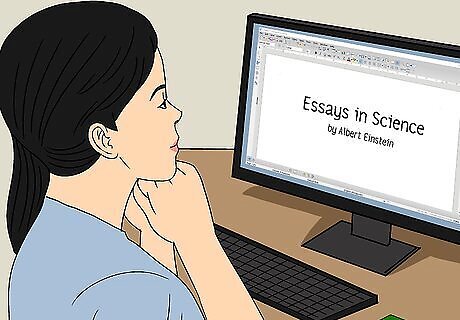
Move on to Einstein’s scientific work meant for a general audience. Not all of Einstein’s scientific writing is dense and theoretical. He was very good at presenting his ideas to non-specialists and wrote some books and articles aimed at the general public. If you want some scientific reading but aren’t sure if you can handle Einstein’s theoretical work yet, then these are the best place to go. Einstein’s most famous general-audience book is Essays in Science, where he discusses the scientists and theories that influenced him, as well as his own theories and how he developed them.

Discover Einstein's most famous equation in his mass-energy paper. Mass-energy equivalence, represented by the famous equation E = m c 2 {\displaystyle E=mc^{2}} E=mc^{2}, is rightfully what Einstein is most known for. It demonstrates that anything with mass has an equivalent amount of energy stored in it. He outlined this equation in a 1905 paper entitled “Does the inertia of a body depend upon its energy-content?” Read this paper to understand the equation that made Einstein famous. This paper was originally published in German, but has been translated into most major languages. This equation forms the baseline for later work in nuclear power, which uses the principle to release massive amounts of energy from small atoms.
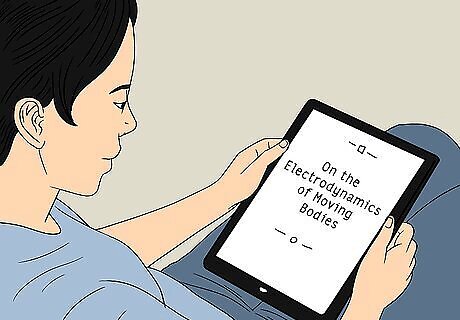
Read Einstein’s 1905 paper on special relativity. This is one of Einstein’s most famous discoveries, and his later theoretical work hinged on this theory of special relativity. He developed this earlier in life when he was only 25, so it influenced much of his later thought. His 1905 paper, "On the Electrodynamics of Moving Bodies," first outlined his discovery of relativity. Read this paper for the earliest statement on this famous principle in physics. Special relativity, simply put, means that the laws of physics apply equally to all non-accelerating bodies. Einstein also demonstrated that the speed of light is always the same. Einstein doesn’t use the term “special relativity” in the paper. It’s called “special” because he’s specifically writing about inertial motion rather than all motion.
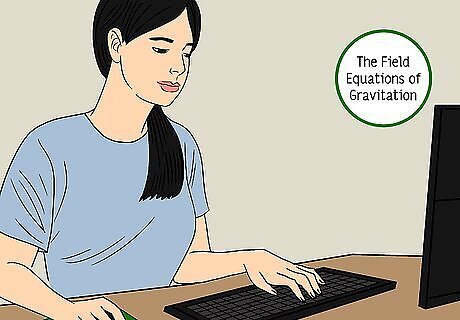
Understand Einstein’s view on general relativity with his 1915 paper. After publishing his work on special relativity, Einstein spend another decade thinking about general relativity, or how the laws of physics affect bodies in motion. He demonstrated that gravity interacts with all objects equally, which is now a major law of physics. Einstein published these findings in a 1915 paper, “The Field Equations of Gravitation,” so read this paper to understand one of his most important discoveries.

Find Einstein's additional writings on Princeton University's website. While these other items are Einstein's most famous publications, he wrote hundreds of articles and papers, so there's plenty more for you to explore. Since Einstein worked at Princeton University until his death, the university has collected and digitized most of his publications and uploaded them onto their library website. If you'd really like to explore more of Einstein's writings, then find digitized copies at https://einsteinpapers.press.princeton.edu/.
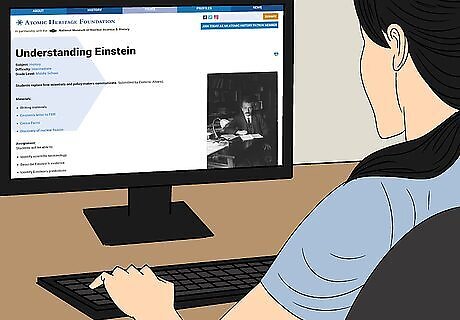
Read Einstein’s letters to understand how he interacted with people. Princeton University also collected and digitized most of Einstein’s correspondence. These letters reveal a lot about the person, as well as provide background information about some of his scientific theories. He maintained a healthy correspondence with other scientists and public figures, so you can learn even more about him by reading some of his digitized letters. Probably Einstein’s most famous letter is his warning to President Franklin Roosevelt about Nazi Germany developing nuclear weapons. You can find that letter at https://www.atomicheritage.org/educational-resources/understanding-einstein. Much of Einstein’s correspondence was collected by Princeton University and is online at https://einsteinpapers.press.princeton.edu/.
Discovering Einstein's Life and Influence
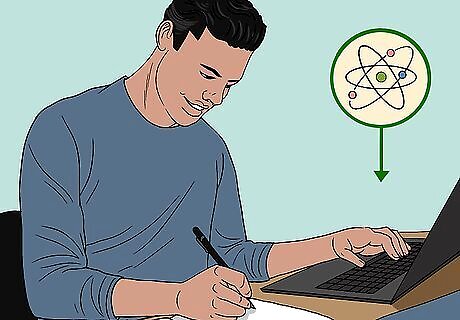
Learn some basic physics to understand Einstein’s theoretical points. While you can read some of Einstein’s work without a background in science, you’ll understand and appreciate his scientific work much more if you have some understanding of physics. Try taking a class or reading up on the basic principles, theorems, equations, and laws of physics. This way, you’ll be much better-equipped to understand Einstein’s contributions. In many cases, the information you’d learn in a basic physics class in high school or college is a good preparation to read Einstein. If you’ve taken a class like this, take a look at your old notes or books to reacquaint yourself with the major principles. You could also read a textbook for an introductory physics class. This should provide you with the basic concepts you’ll need. You may also want to review some algebra, as this is an important part of physics.

Read about Einstein’s life to trace the development of his ideas. You can gain a new appreciation of Einstein’s work by learning about his life. There are many comprehensive biographies of the man and his work. Reading about his life can help you understand how he developed his theories. If you don’t have access to books, there is plenty of information online about Einstein’s life. Try looking for articles from the Smithsonian, Britannica, and Princeton University for biographical details. There are also books about individual theories or equations that Einstein developed. These are like mini-biographies of specific ideas.

Learn about the history surrounding Einstein’s major achievements. Einstein specialists point out that while he was a mathematician, he was primarily concerned with the physical world and practical problems. His theories usually reflected a real-world problem that concerned him. Learning about the historical context around some of his discoveries can help you appreciate why he developed them. For example, some of Einstein’s theories on nuclear power were developed early in World War II. This is because he was concerned about Nazi Germany developing nuclear weapons and wanted to warn the Allies about this possibility. Some key dates in Einstein’s life are 1905 (when he discovered special relativity and mass-energy), 1915 (when he discovered general relativity), 1921 (when he won the Nobel Prize for his discovery of the photoelectric effect), and the early 1940s (when did early research in nuclear power). Focus on these dates to understand his major discoveries.
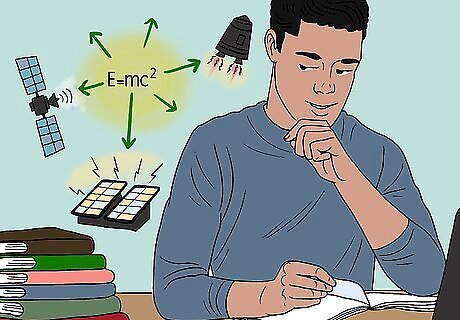
Investigate how Einstein’s ideas were applied in real life. You might appreciate Einstein’s theoretical work even more if you understood how they’ve influenced the world. Einstein’s theories of energy, mass, relativity, and gravity have helped the world develop numerous technologies and scientific processes that have improved life. Learn about Einstein’s influence to fully understand his significance as a scientist. Some of the technology and processes we now have because of Einstein include space travel, GPS navigation, nuclear energy, lasers, and solar power.




















Comments
0 comment